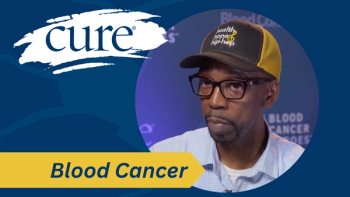
Immunotherapy Is Superior to Chemotherapy for Children and Young Adults with Relapsed B-Acute Lymphoblastic Leukemia
In a phase 3 clinical trial, Blincyto (blinatumomab), a type of immunotherapy, improved survival and showed fewer side effects in young patients.
Immunotherapy proved to be superior to standard chemotherapy in treating children and young adults with high and intermediate risk relapsed B-acute lymphoblastic leukemia (B-ALL), according to study findings presented during the 2019 American Society of Hematology Annual Meeting.
Patients treated with Blincyto (blinatumomab), a type of immunotherapy, experienced fewer and less severe side effects, had higher rates of minimal residual disease (MRD) response, were more likely to proceed to a bone marrow transplant and had improved disease-free and overall survival rates.
Based on these findings, researchers who are part of the Children’s Oncology Group Study reported that Blinctyo should be standard of care for these patients as they prepare to receive a bone marrow transplant.
“From past experience, our understanding is that bone marrow transplant is the therapy that gives these children and young adults the best chance of a cure,” lead study author Dr. Patrick A. Brown, of the Johns Hopkins Kimmel Cancer Center, said in a press release.
The phase 3 clinical trial included more than 200 patients aged 1 year to 30 years old who were randomly selected to a control group who received standard chemotherapy or experimental group who received two months of Blincyto.
Blincyto is a monoclonal antibody that binds to CD19, a protein found on most B cells, and CD3, a protein expressed on the surface of T cells. By targeting these proteins, the medication may help the immune system to kill cancer cells.
At a median follow-up of 1.4 years, those who received Blincyto had a higher rate of disease-free and overall survival, as well as an ability to proceed to transplant. Disease-free survival was 59% in those who were treated with Blincyto compared with 41% who had chemotherapy. Overall survival was 79% versus 59%, respectively.
Only 45% of patients who received chemotherapy were able to move on to transplant compared with 73% of those who received Blincyto.
“Based on our study, it appears that blinatumomab is a much more effective bridge to transplant for this patient population, leading to a much larger portion of patients who are actually able to receive a bone marrow transplant,” said Brown. “We believe that is the reason for the striking improvement in survival among patients who received blinatumomab.”
In addition, after the first month of chemotherapy, 79% of those who received Blincyto achieved undetectable MRD compared with 21% who received chemotherapy alone, according to the researchers. MRD describes a very small number of cancer cells that remain in the body during or after treatment and can be useful in predicting disease progression and response.
Blincyto also showed fewer side effects in patients compared with chemotherapy. The rate of febrile neutropenia, infections, sepsis and mucositis were higher in the chemotherapy group than in the Blincyto group. Although cytokine release syndrome (the rapid release of cytokines into the blood stream), seizures and other forms of nerve damage were seen in the Blincyto group, researchers noted that all of these side effects were fully resolved. In the control group, four people died from toxic effects of chemotherapy whereas no one died in the Blincyto group.
“Further research is needed to examine the potential benefits of using immunotherapy earlier in the B-ALL treatment cycle and to find out whether blinatumomab therapy can be further optimized through combinations with other therapeutic approaches,” said Brown.




